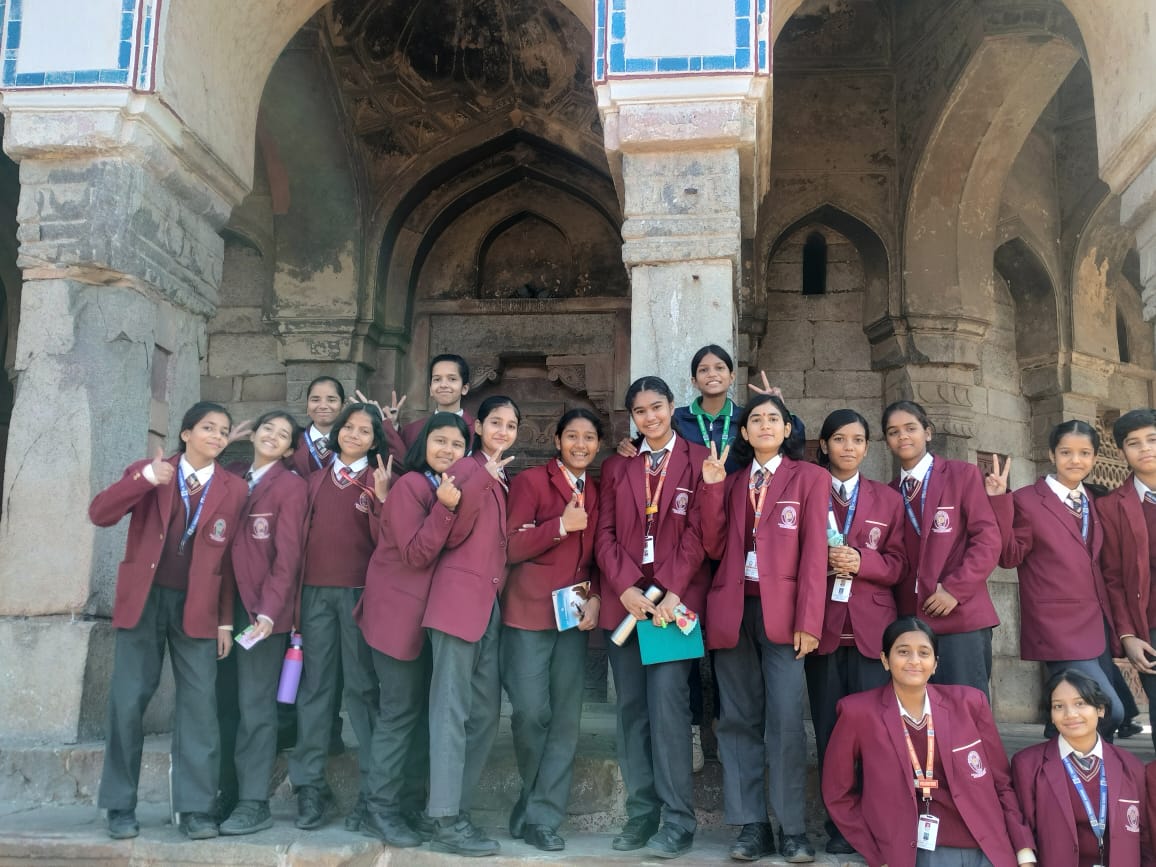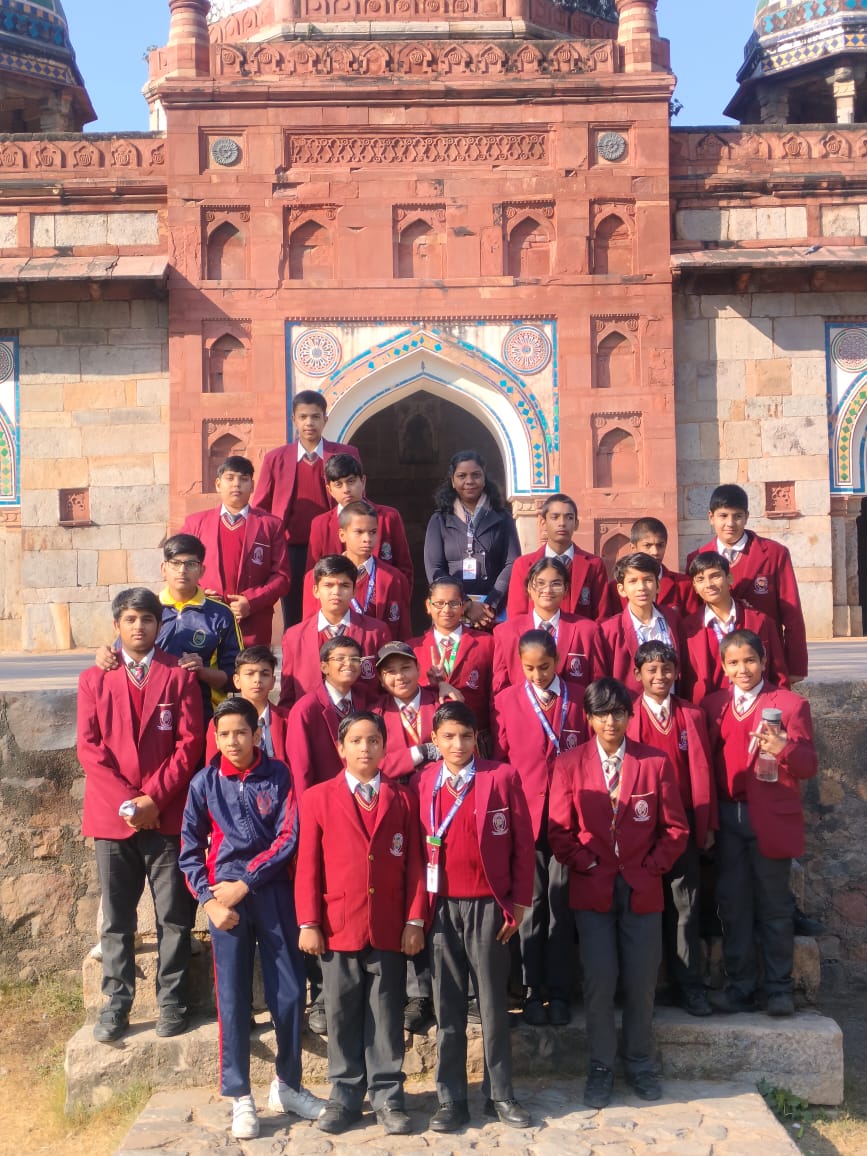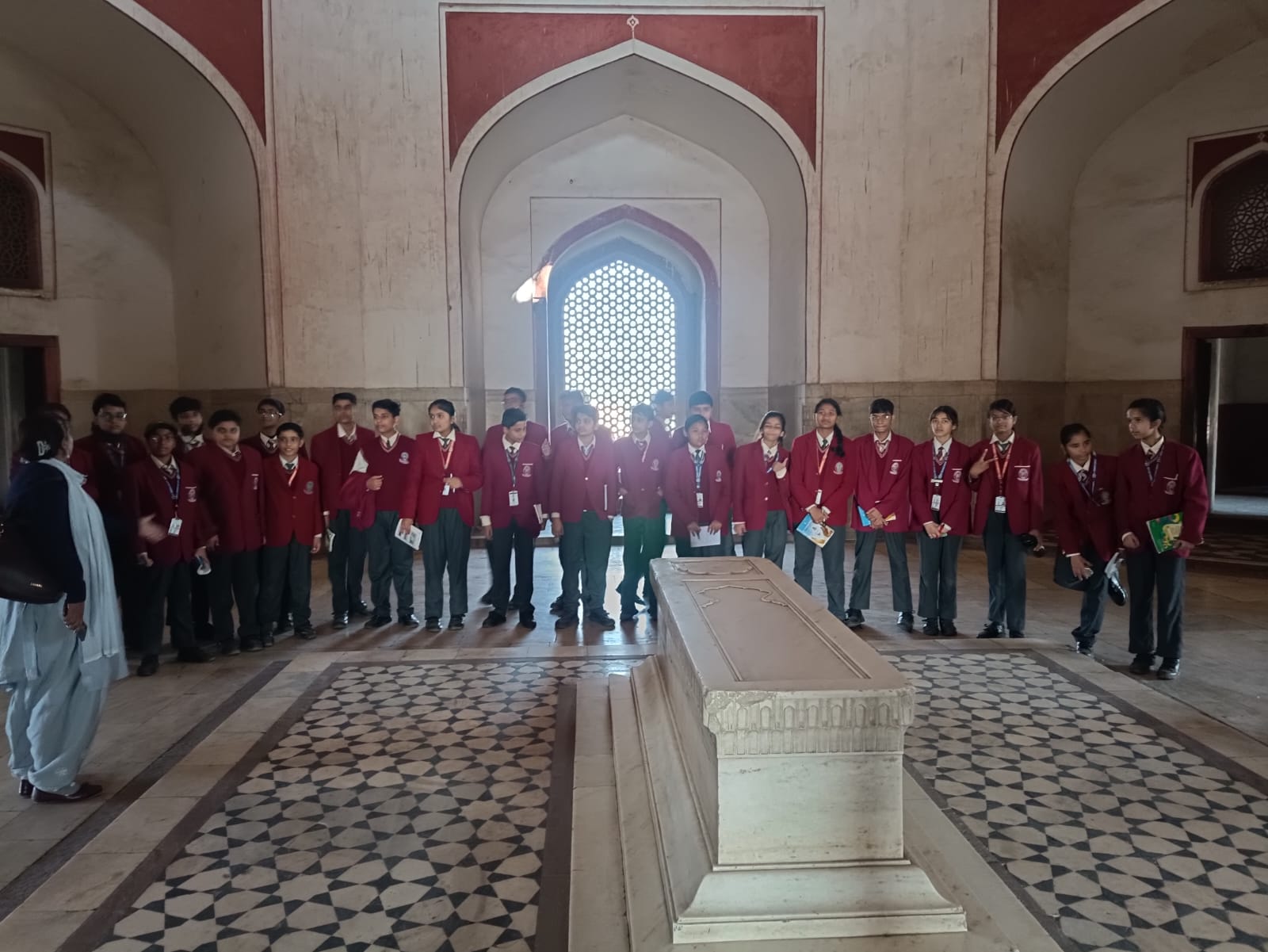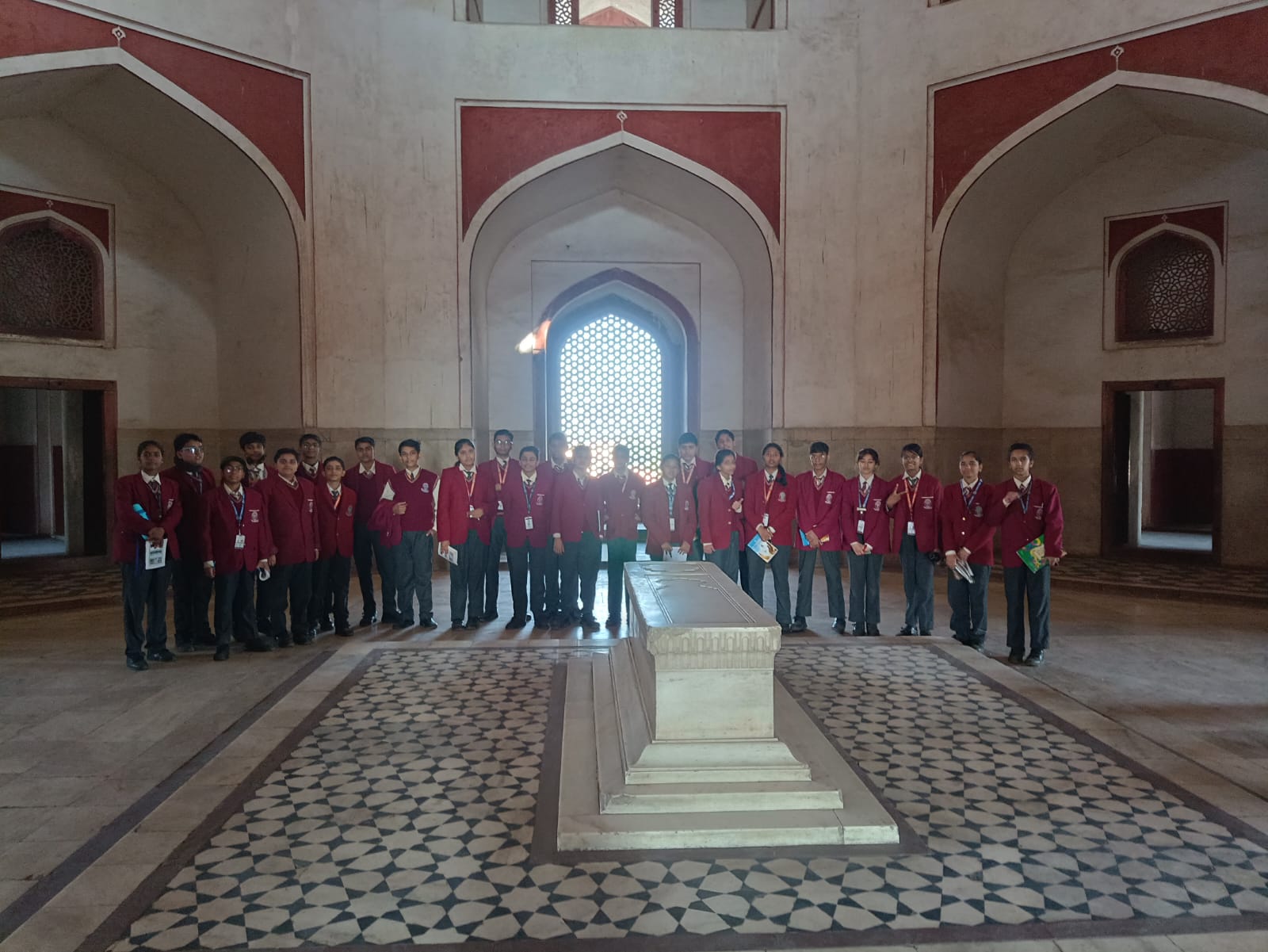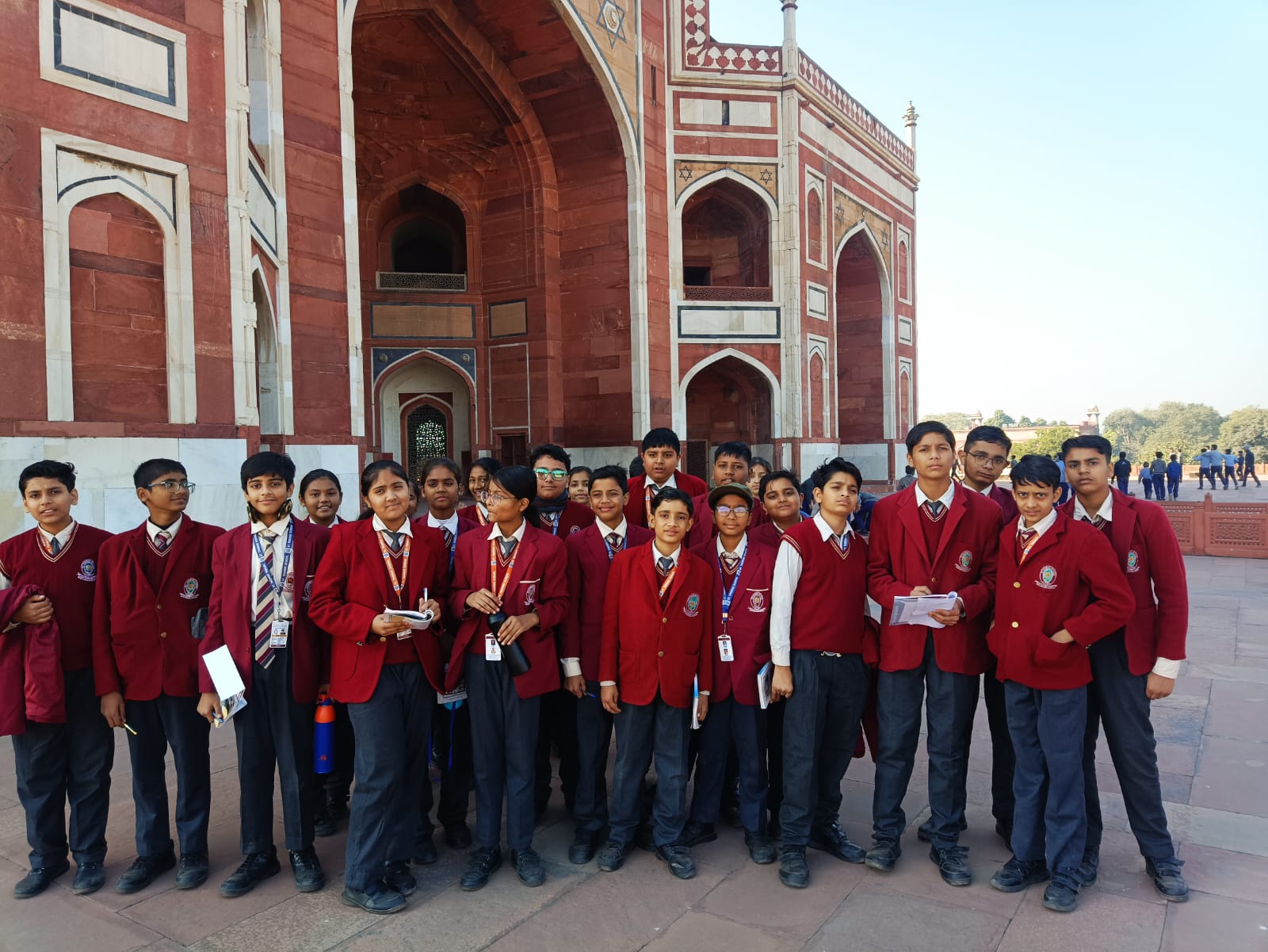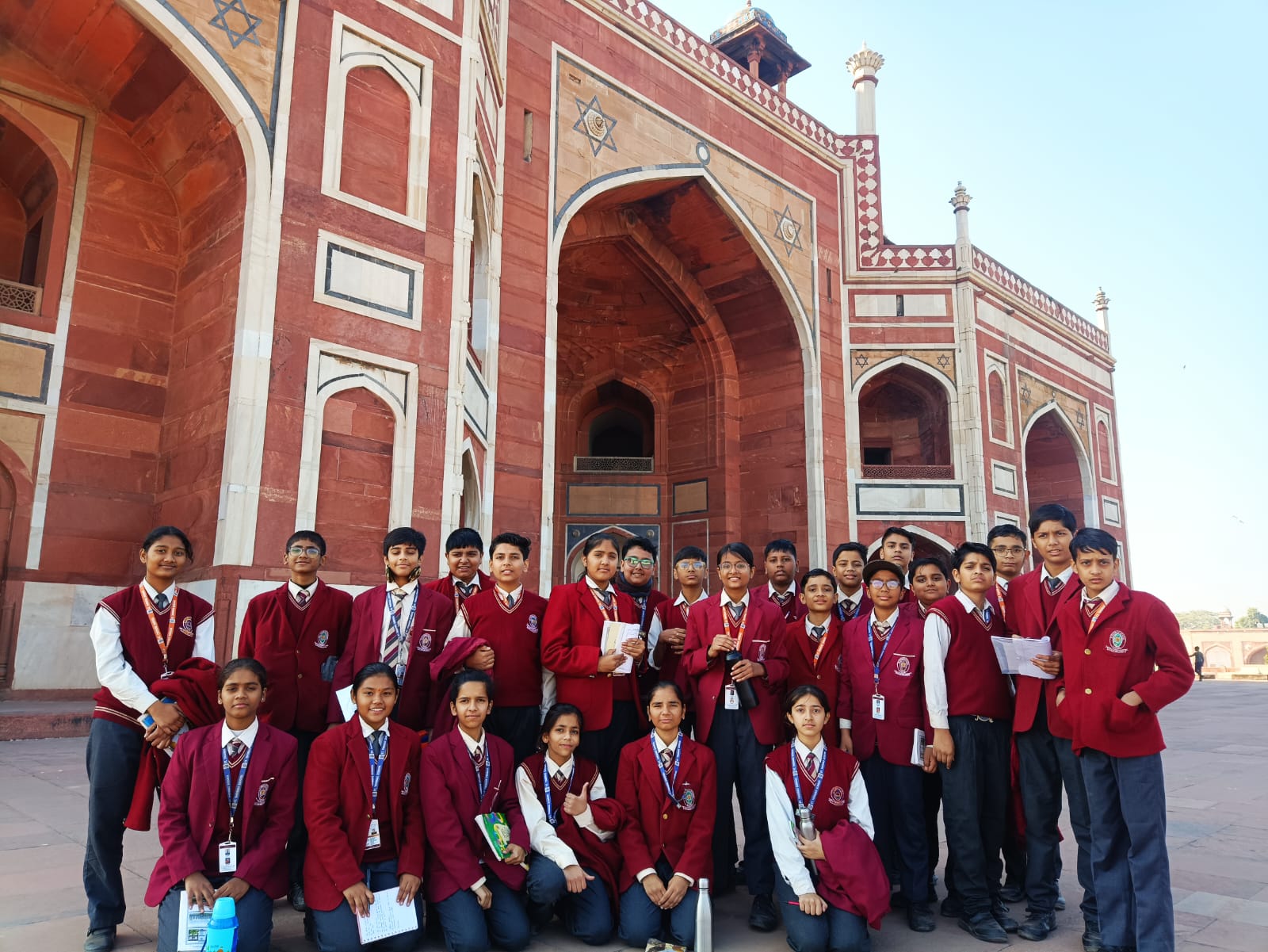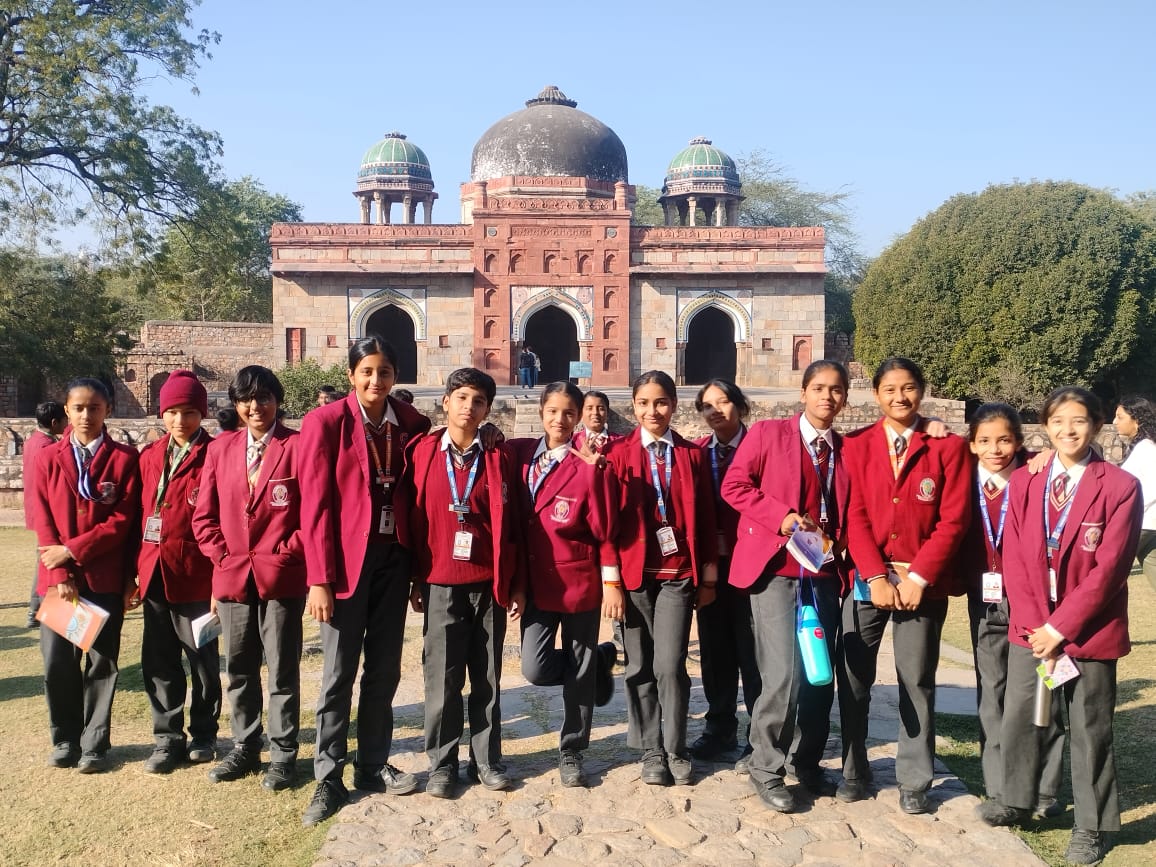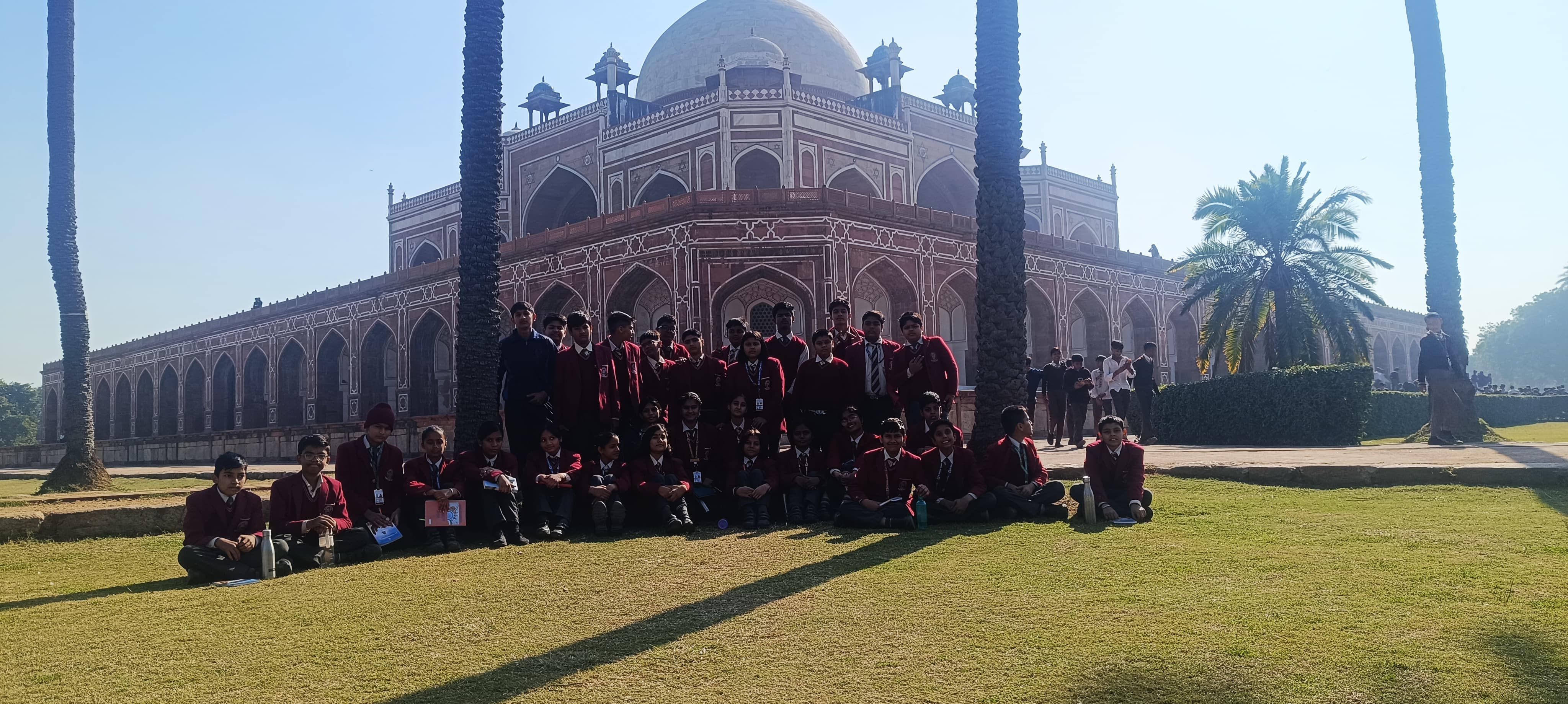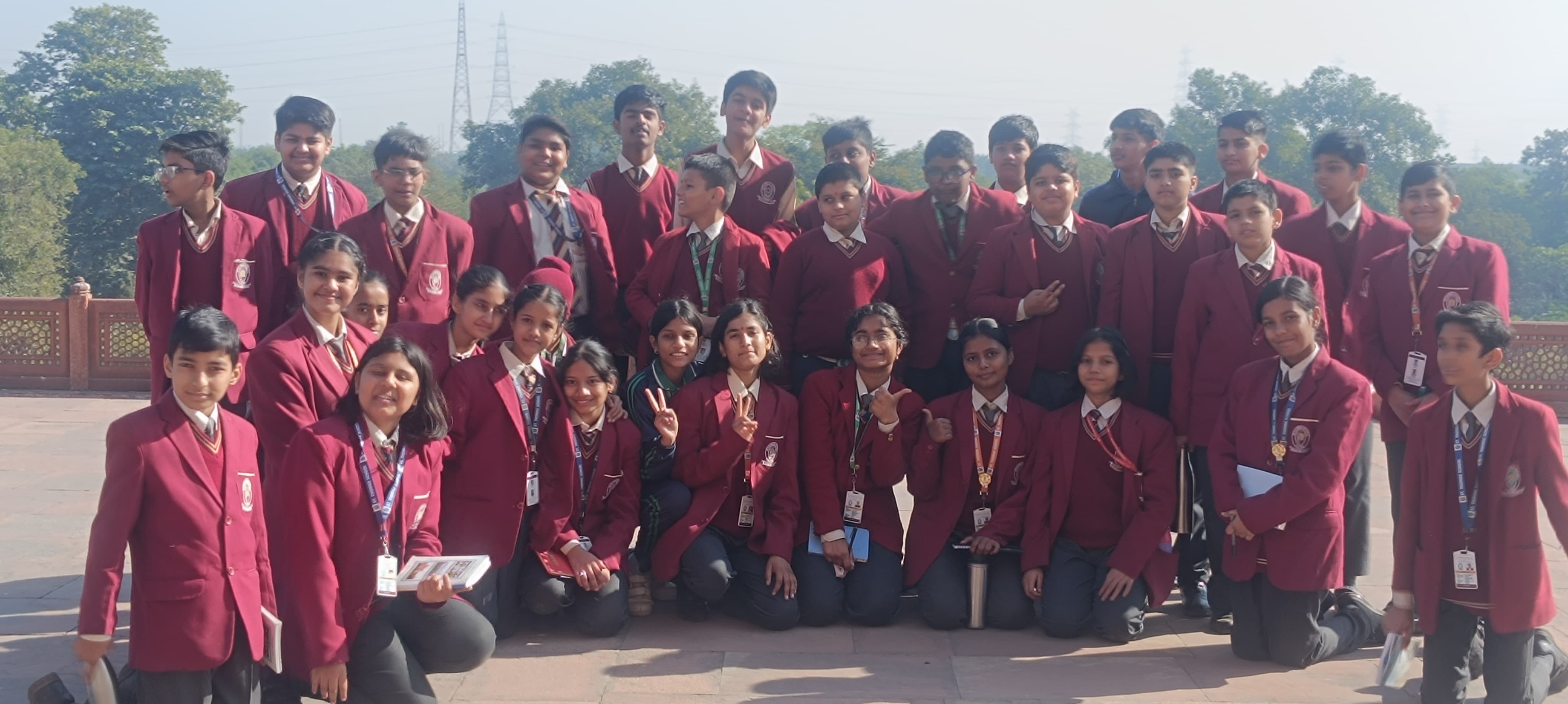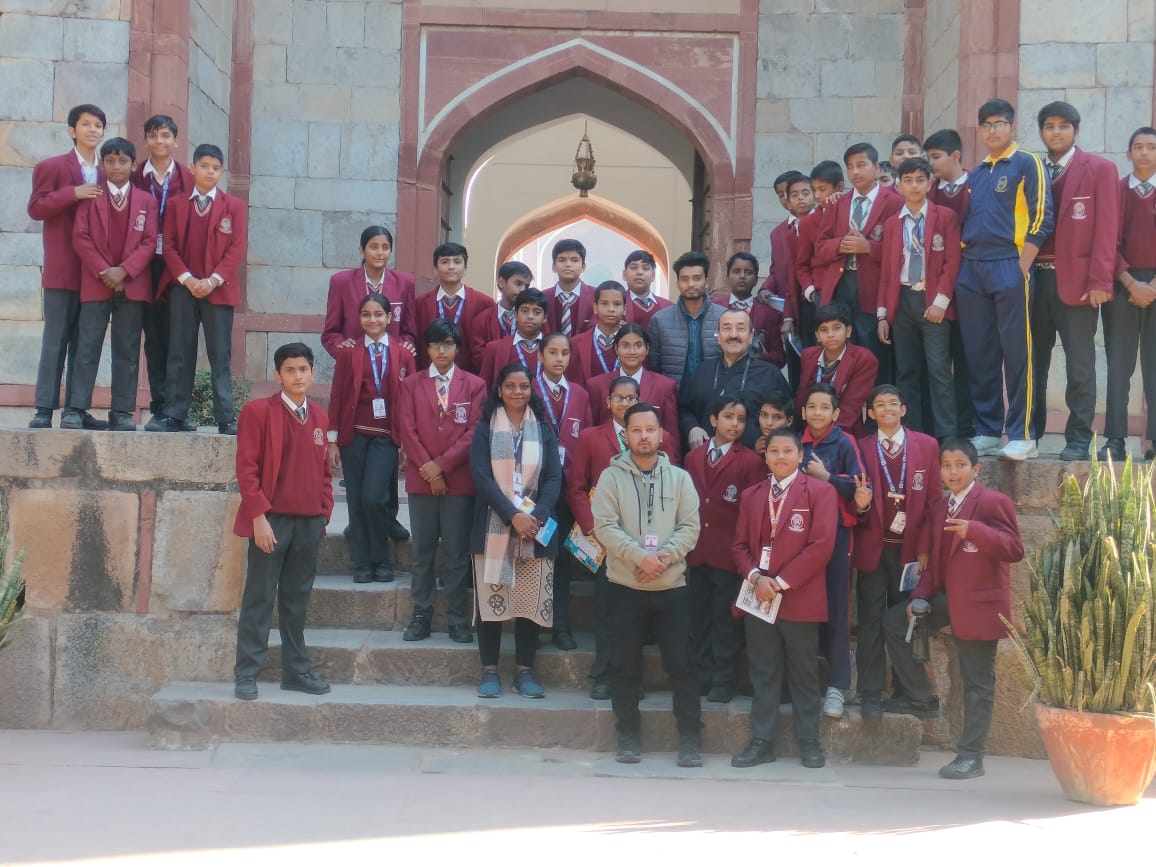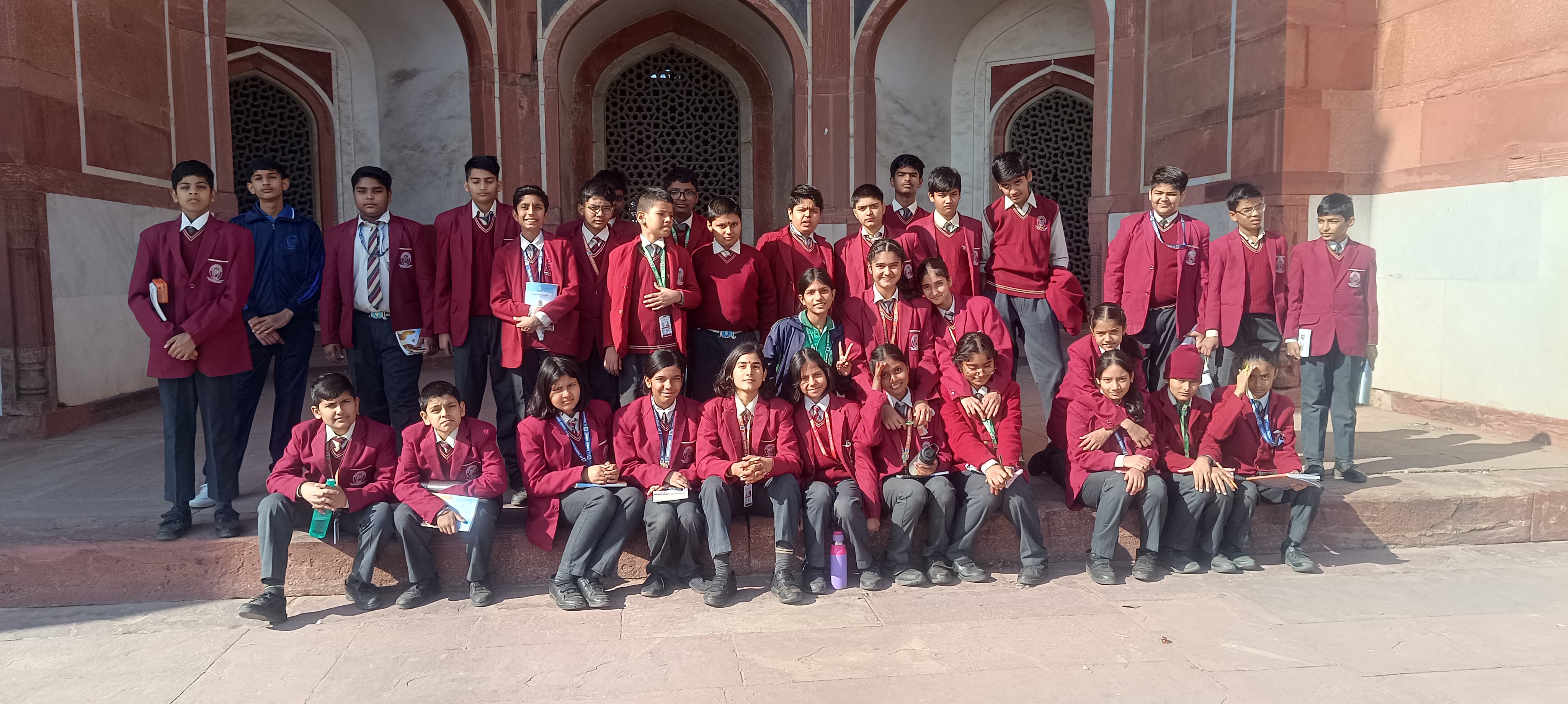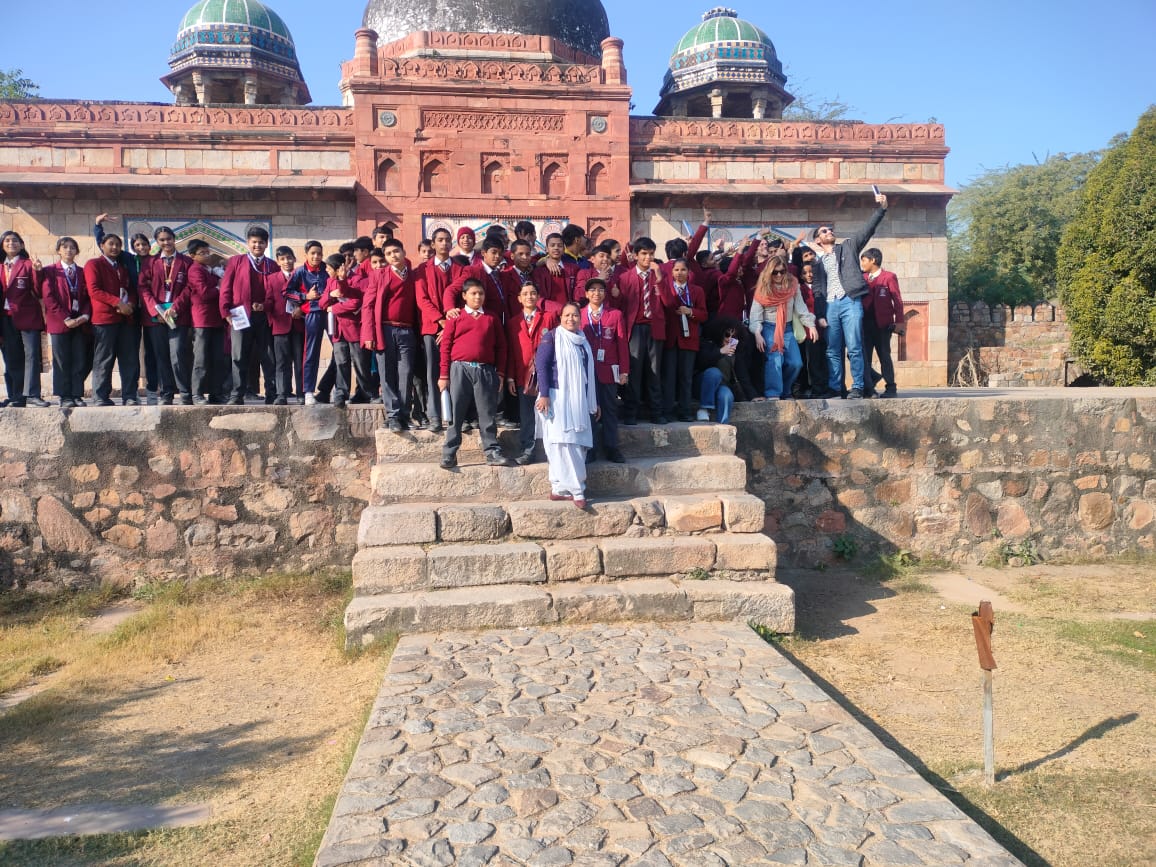Report on the Educational Trip to Humayun’s Tomb
The students of Class 7 from St. Thomas School, Loni, embarked on an educational trip to Humayun’s Tomb, organized by the Social Science Department. The trip aimed to provide an insightful exploration of the Mughal Empire and its remarkable architectural legacy. A total of 97 students participated, accompanied by six teachers who ensured a smooth and enriching experience. The students were captivated by the grandeur and elegance of the site. Humayun’s Tomb, a UNESCO World Heritage Site, served as a perfect example of Mughal architectural brilliance, with its intricate carvings, symmetrical gardens, and the iconic use of red sandstone and white marble. To make the experience more engaging, the students were divided into groups, and from each group, two students acted as tourist guides.
These students had conducted prior research under the guidance of their teachers and shared fascinating facts about the tomb and its history with their peers. The teachers guided the students through the historical significance of the tomb, explaining how it was built by Emperor Humayun’s wife, Empress Bega Begum, and how it became a prototype for future Mughal architecture, including the Taj Mahal. The students also learned about the cultural and artistic achievements of the Mughal Empire, enhancing their understanding of history beyond textbooks. They explored the Charbagh gardens, observed the cenotaphs, and marveled at the intricate lattice work, which left them deeply inspired. The trip was both educational and enjoyable, allowing the students to witness history firsthand and appreciate the richness of India’s heritage. It was a memorable experience that complemented their classroom learning and ignited a deeper interest in historical studies.










